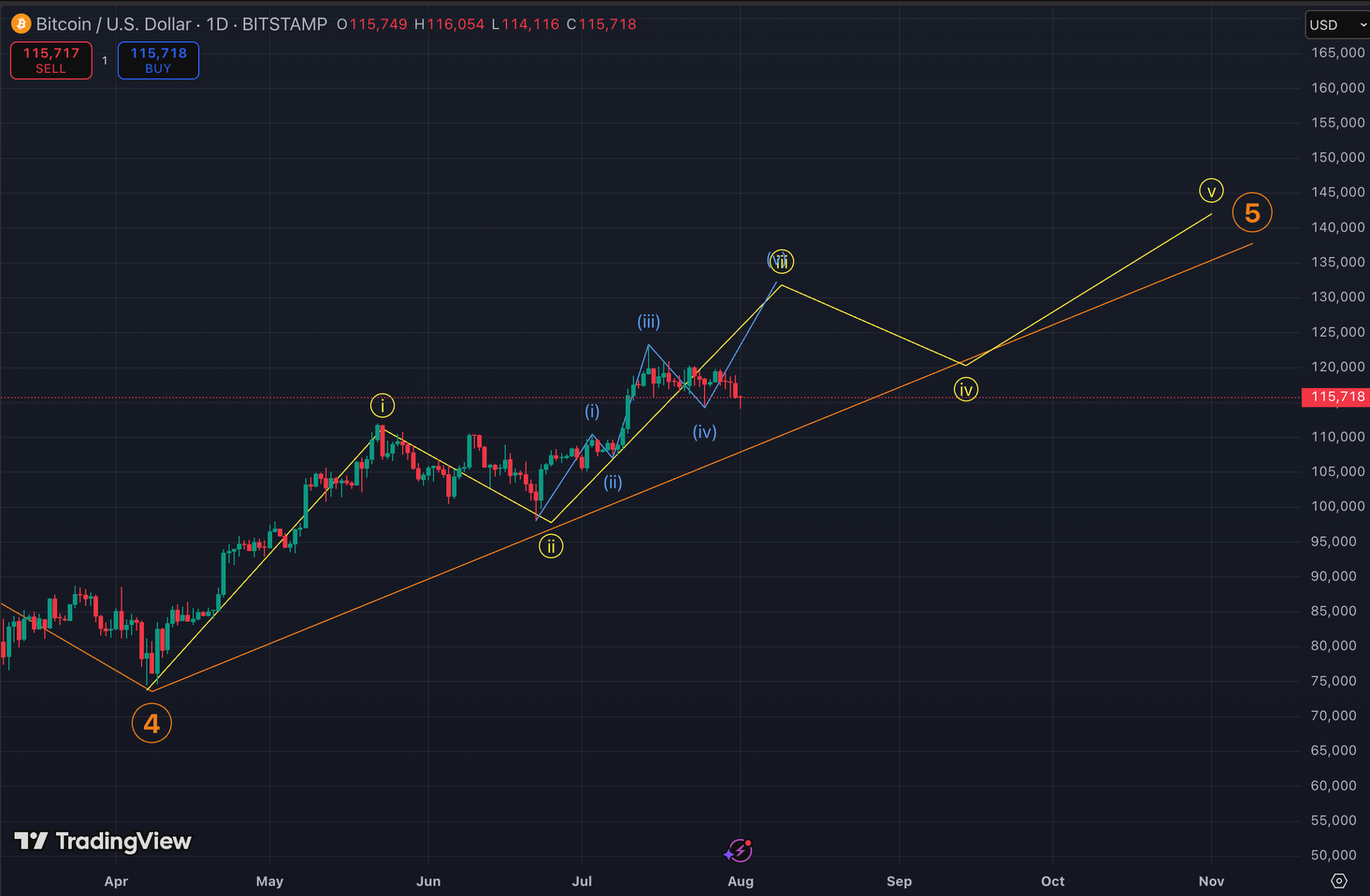Don’t call the top yet, market analyst specializing in the Elliott wave theory, told CoinDesk. He added that bitcoin (BTC) will rally to around $140,000 this year before slipping into a bear market in 2026.
The leading cryptocurrency by market value, has dropped 4% over the past week, with prices hitting lows under $112,000 over the weekend, according to CoinDesk data.
The decline comes after weeks of profit-taking by long-term holders near $120,000 and alongside sharp losses in key crypto-related stocks such as Strategy (MSTR) and Coinbase (COIN).
The sell-off is a typical retracement wave, representing a temporary breather from the preceding bullish impulse wave, and could set the stage for a rally to $140,000 by year-end, according to John Glover, chief investment officer at crypto financial services company Ledn.
“Firmly caught in the summer doldrums, the BTC price continues to follow the expected trajectory and will soon complete the 5-wave move depicted by the blue line [in the chart] below, which will finish wave iii (yellow line) of Wave 5 (orange line). All to say, we’re still on target to hit $135,000 – $140,000 by the end of 2025,” Glover said in an email.
What is the Elliott Wave?
The Elliott Wave Theory, introduced by Ralph Nelson Elliott in 1938 in his book, “The Wave Principle, is a way of understanding market movements by recognizing that they follow predictable, repeating patterns like natural fractals.
The core idea is that crowd psychology moves in cycles, creating a pattern of five waves in the direction of the primary trend or the impulse move. The five-wave structure encompasses three impulse waves (1,3, and 5) and two retracing waves (2 and 4). Sometimes, impulse waves are extended and powerful, comprising their own 5-wave structure.
A three-wave corrective structure follows the five-wave structure. This 5-3 wave pattern repeats at both larger and smaller scales, allowing observers to forecast future price action based on the market’s current position within the broader context.

According to the above chart, BTC is currently moving in the impulse wave (iii) of the extended impulse wave 5.
The impulse wave (iii) could hit a high of $130,000 in the next couple of weeks, before prices drop to around $110,000 in September, completing the retrace wave (iv). After that, the final impulse wave (v) of the larger impulse wave 5 will resume, marking a bull market peak at around $140,000.
“Once we achieve the $140,000-ish region, there will be a LOT of debate as to how much further the market will go, and I’m sure we’ll hear the bulls quoting $250,000 to $500,000 in 2026. This is not my thesis as I believe we will enter a bear market for BTC in 2026,” Glover said.
Glover’s take contrasts with the popular narrative that institutional adoption through ETFs has broken bitcoin’s four-year cycles, which historically indicate a price peak this year followed by an extended bear market.
Read more: XRP Leads Market Gains, Bitcoin Nears $115K as Trump Tariffs Sour Bullish Crypto Mood

